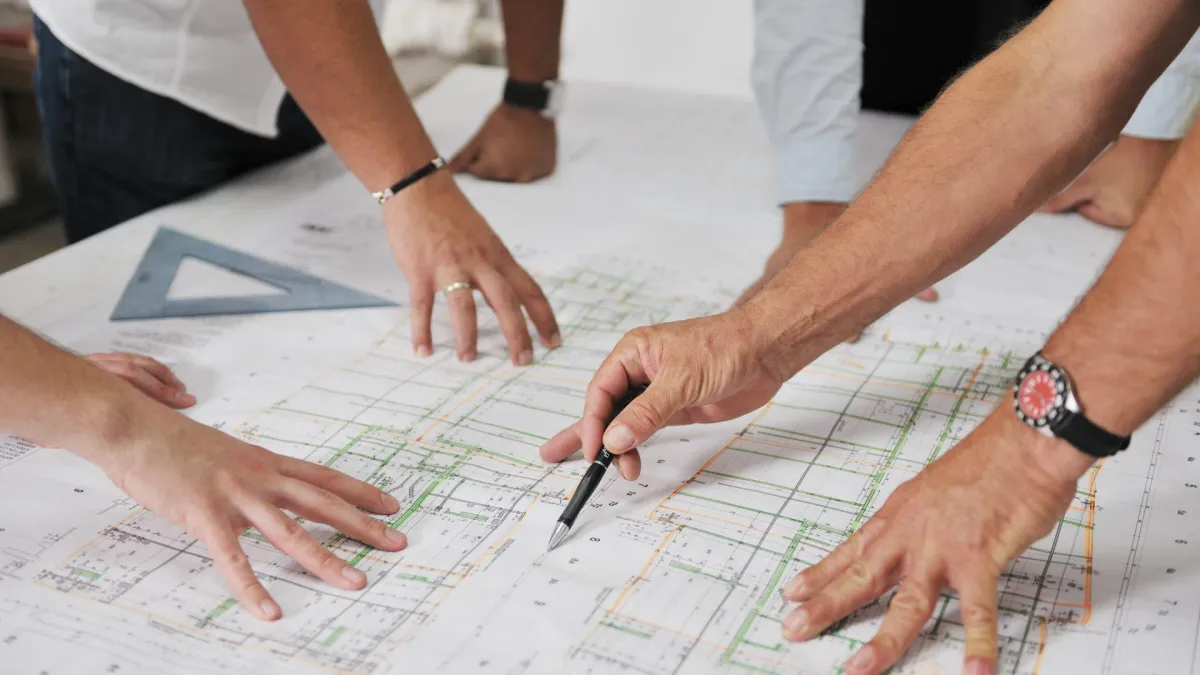Blog

The Complete Guide to Residence Design
Designing a residence is more than just creating a place to live; it's about crafting a space that reflects your personality, meets your needs, and enhances your quality of life. Whether you're starting from scratch or redesigning your current home, understanding the basics of residence design can help you create a harmonious and functional environment. This guide will take you through the essential steps and considerations in residence design, from planning and budgeting to choosing materials and integrating the latest trends.
Understanding the Basics of Residence Design
Defining Residence Design
Residence design involves the careful planning and execution of interior and exterior spaces to create a cohesive and aesthetically pleasing living environment. It encompasses various elements such as architecture, interior decoration, landscaping, and lighting.
The Role of a Professional Designer
When to Hire a Professional
Hiring a professional designer can be beneficial, especially for complex projects. They bring expertise, experience, and a fresh perspective to your design, ensuring every detail is considered.
DIY Design vs. Professional Design
While professional design can be costly, DIY design allows for more personal input and can be budget-friendly. However, it's essential to balance creativity with practicality.
Key Principles of Design
Functionality
Your home should be designed with functionality in mind. Consider how you will use each space and ensure that the design enhances usability.
Aesthetics
Aesthetic appeal is crucial in residence design. Choose styles, colors, and materials that resonate with your personal taste and create a visually pleasing environment.
Balance and Harmony
Achieving balance and harmony in design involves the careful arrangement of elements to create a cohesive look. This includes the distribution of colors, textures, and furniture.
Planning Your Design Project
Setting Your Goals
Before starting your project, outline your goals. What do you want to achieve with your design? Are you looking to create a modern, minimalist space, or a cozy, traditional home?
Budgeting for Your Project
Cost Estimation
Estimate the costs involved in your design project, including materials, labor, and unexpected expenses. It's crucial to have a clear budget to avoid overspending.
Managing Unexpected Expenses
Unexpected expenses are common in design projects. Set aside a contingency fund to cover any unforeseen costs.
Creating a Timeline
Milestones and Deadlines
Establish milestones and deadlines to keep your project on track. This will help you manage your time effectively and ensure the project progresses smoothly.
Flexibility in Planning
While it's important to have a timeline, be flexible. Unexpected delays can occur, and being adaptable will help reduce stress.
Elements of Effective Residence Design
Space Planning
Open vs. Closed Floor Plans
Decide between an open or closed floor plan based on your lifestyle and preferences. Open floor plans offer a sense of spaciousness, while closed plans provide privacy.
Maximizing Small Spaces
If you're working with limited space, use smart design strategies to maximize every inch. Multi-functional furniture and clever storage solutions can make a small area feel larger.
Color Schemes and Psychology
Choosing a Color Palette
Select a color palette that reflects your personality and complements your home's style. Consider the impact of colors on mood and atmosphere.
Impact of Colors on Mood
Colors can significantly affect your mood. For example, blues and greens are calming, while reds and yellows are energizing. Choose colors that align with the desired ambiance of each room.
Lighting Design
Natural Lighting
Maximize natural light by using large windows, skylights, and reflective surfaces. Natural light enhances the sense of space and well-being.
Artificial Lighting
Incorporate a variety of artificial lighting options, such as ambient, task, and accent lighting, to create a layered and versatile lighting scheme.
Smart Lighting Solutions
Consider smart lighting solutions that allow you to control the lighting remotely and adjust the ambiance according to your needs.
Choosing Materials and Finishes
Flooring Options
Hardwood
Hardwood floors add warmth and elegance to any space. They are durable and available in a variety of finishes.
Carpets and Rugs
Carpets and rugs provide comfort and can be used to define different areas within a room. Choose from a range of textures, colors, and patterns.
Tile and Stone
Tile and stone are versatile and easy to maintain. They are ideal for high-traffic areas like kitchens and bathrooms.
Wall Treatments
Paint
Paint is one of the most cost-effective ways to transform a space. Choose high-quality paint for a lasting finish.
Wallpaper
Wallpaper adds texture and pattern to a room. It can be used as an accent or to cover entire walls.
Textures and Patterns
Incorporate different textures and patterns to add depth and interest to your design. This can be achieved through fabrics, wall coverings, and decor items.
Furniture and Decor
Choosing the Right Pieces
Select furniture that fits the scale of your space and serves your functional needs. Prioritize comfort and durability.
Arranging Furniture
Arrange furniture to facilitate movement and conversation. Consider the focal points of the room and create a balanced layout.
Personalizing Your Space
Add personal touches through decor items, artwork, and family heirlooms. These elements make your home unique and reflective of your personality.
Sustainability in Residence Design
Eco-Friendly Materials
Choose eco-friendly materials, such as reclaimed wood, bamboo, and recycled metal, to reduce your environmental impact.
Energy Efficiency
Insulation and Windows
Proper insulation and energy-efficient windows can significantly reduce energy consumption and lower utility bills.
Energy-Efficient Appliances
Invest in energy-efficient appliances to save on energy costs and reduce your carbon footprint.
Sustainable Practices
Reducing Waste
Minimize waste by planning carefully and reusing materials. Donate or repurpose items instead of discarding them.
Recycling and Upcycling
Incorporate recycling and upcycling into your design by using reclaimed materials and repurposing old items.
Technology in Modern Residence Design
Smart Home Integration
Integrate smart home technology to enhance convenience, security, and energy efficiency. This includes smart thermostats, lighting, and home assistants.
Home Automation Systems
Home automation systems allow you to control various aspects of your home, such as lighting, temperature, and security, from a central device.
Security and Surveillance
Modern security systems offer advanced features like remote monitoring, motion detection, and smart locks to keep your home safe.
Trends in Residence Design
Minimalism
Minimalism focuses on simplicity and functionality, using a neutral color palette and clean lines to create a serene environment.
Biophilic Design
Biophilic design incorporates natural elements, such as plants and natural light, to create a connection with nature and enhance well-being.
Multi-Functional Spaces
With the increasing need for flexible living spaces, multi-functional designs that serve various purposes are becoming more popular.
Conclusion
Residence design is a dynamic and personal process that combines creativity, practicality, and sustainability. By understanding the basics, planning carefully, and staying updated with trends, you can create a home that is both beautiful and functional. Start your design journey today, and transform your living space into a reflection of your personality and lifestyle.
FAQs
What is the first step in residence design? The first step is setting your goals and defining what you want to achieve with your design. This includes determining the style, functionality, and overall vision for your space.
How can I design my home on a budget? To design your home on a budget, prioritize essential elements, use cost-effective materials, and consider DIY projects. Plan carefully to avoid unexpected expenses.
What are the latest trends in home design? Current trends include minimalism, biophilic design, and multi-functional spaces. These trends focus on simplicity, natural elements, and versatile living areas.
How do I choose the right color scheme for my home? Choose a color scheme that reflects your personality and complements your home's style. Consider the psychological impact of colors and how they affect the mood of each room.
Can I implement sustainable practices in my design easily? Yes, implementing sustainable practices is achievable by choosing eco-friendly materials, energy-efficient appliances, and incorporating recycling and upcycling into your design.
Testimonials

John Doe
Finance Manager
Lorem ipsum dolor sit amet, consectetuer adipiscing elit. Aenean commodo ligula eget dolor. Aenean massa. Cum sociis natoque penatibus et magnis dis parturient montes, nascetur ridiculus mus.

John Doe
Finance Manager
Lorem ipsum dolor sit amet, consectetuer adipiscing elit. Aenean commodo ligula eget dolor. Aenean massa. Cum sociis natoque penatibus et magnis dis parturient montes, nascetur ridiculus mus.

John Doe
Finance Manager
Lorem ipsum dolor sit amet, consectetuer adipiscing elit. Aenean commodo ligula eget dolor. Aenean massa. Cum sociis natoque penatibus et magnis dis parturient montes, nascetur ridiculus mus.

